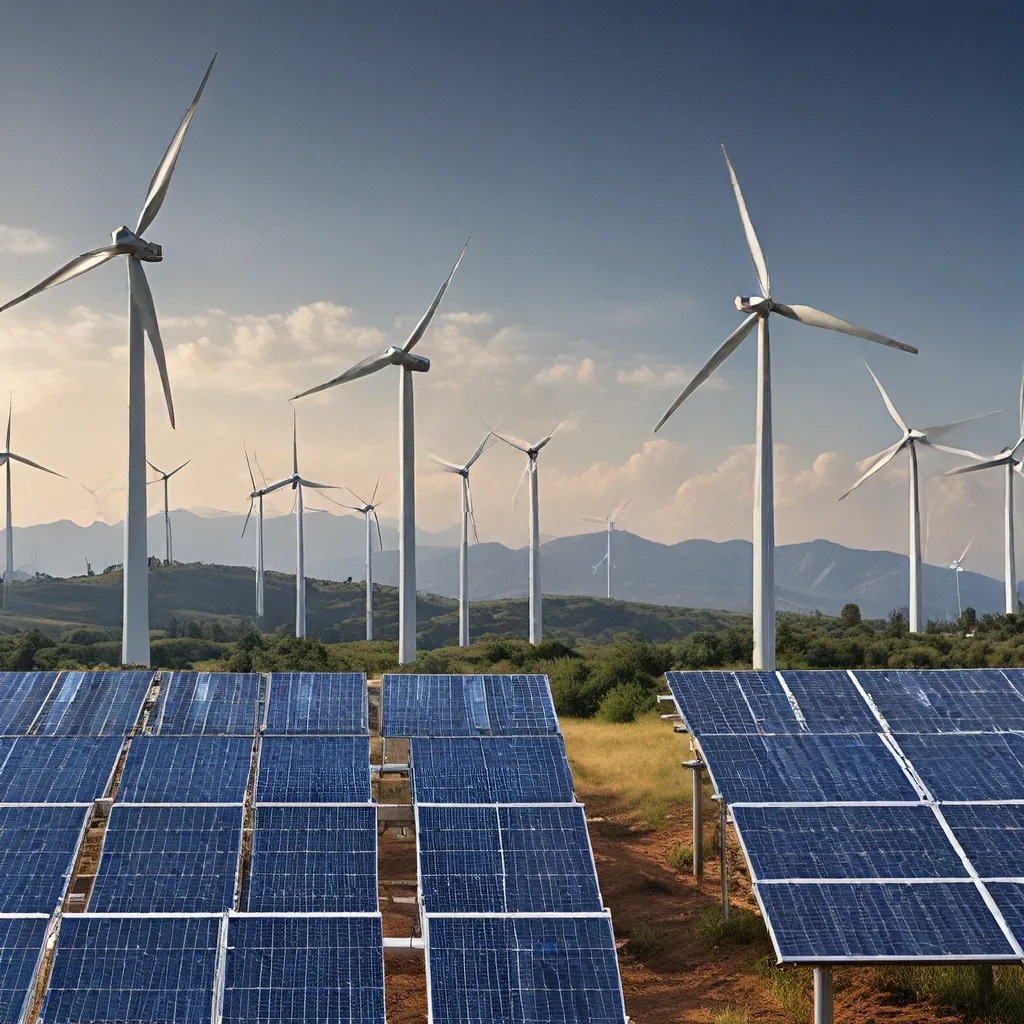
Ah, the age-old conundrum – how do we tackle climate change and build a sustainable future? Well, my friend, the answer might just lie in the power of renewable energy financing. Buckle up, because we’re about to take a deep dive into this fascinating topic.
The Renewable Energy Revolution
Let’s start with the basics. Solar and wind technologies are revolutionizing the power sector, and they’re becoming a game-changer for many developing countries. Why, you ask? Well, these renewable sources are abundant, cheaper than fossil fuels in many regions, and can be harnessed through lighter installations. Plus, when combined with battery storage, they offer a reliable source of power.
Now, you might be thinking, “That’s great and all, but how much of a difference are we really making?” Well, according to the World Bank’s estimates, we need to install a whopping 950 gigawatts (GW) of solar photovoltaic (PV) and 580 GW of wind in developing countries by 2025. That’s a massive increase from the current installed capacity, and it’s going to require an investment of over $150 billion per year. Yikes, that’s a lot of dough!
The Financing Conundrum
Here’s the kicker – most developing countries still lack a pipeline of bankable solar and wind projects that the private sector is willing to invest in. Why, you ask? Well, it’s a perfect storm of challenges, my friend. Grid integration, technical constraints, off-taker risk, and weak procurement and planning capacity – these are the barriers that are preventing countries from attracting the private investments needed to accelerate renewable energy deployment.
But fear not, there’s a glimmer of hope on the horizon. The World Bank’s Energy Sector Management Assistance Program (ESMAP), in partnership with some heavy hitters like the Agence Française de Développement (AFD), the International Renewable Energy Agency (IRENA), and the International Solar Alliance (ISA), has launched the Sustainable Renewables Risk Mitigation Initiative (SRMI). This initiative aims to help governments develop, finance, and implement sustainable solar and wind programs, addressing those pesky challenges head-on.
Unlocking the Financing Potential
Now, you might be wondering, “Okay, so what’s the plan?” Well, the SRMI’s approach is all about mitigating the risks of solar and wind deployment. They’re offering development and climate financing through a Risk Mitigation Approach, which essentially means they’re helping governments tackle those daunting challenges we mentioned earlier.
But wait, there’s more! The SRMI’s guiding document, “A Sure Path to Sustainable Solar, Wind, and Geothermal,” lays out the key steps governments need to take to make their renewable energy programs more attractive to the private sector. It’s like a choose-your-own-adventure, but for saving the planet!
Partnering for Progress
Now, you might be thinking, “This all sounds great, but how can I get involved?” Well, my friend, that’s where the power of partnerships comes into play. The SRMI is all about bringing together a diverse array of stakeholders – from governments and development banks to private investors and local communities – to tackle these challenges head-on.
For example, the Climate Solutions Partnership (CSP), a collaboration between HSBC, WRI, and WWF, is working to accelerate the transition to net-zero by creating more opportunities to make climate solutions commercially viable. And the Natural Capital Protocol is helping organizations, including banks, understand their dependence and impact on natural capital, which could open the door for more nature-based solutions.
Overcoming the Barriers
Now, I know what you’re thinking – “Renewable energy financing sounds like a daunting task.” And you’re not wrong, my friend. But the key is to take it one step at a time and tackle those barriers head-on.
One of the biggest hurdles is the lack of a clear, standardized methodology for evaluating the economic viability of renewable energy projects. But that’s where innovative initiatives like the Mangrove Bond, created by HSBC Australia and Earth Security, come into play. They’re developing a blueprint for market bonds to protect and restore mangroves, which could serve as a model for other nature-based solutions.
Another key challenge is ensuring that the benefits of these projects are properly accounted for and translated into monetary terms. But companies like Coca-Cola have already developed and tested standardized methodologies to account for the ecosystem service benefits of their water replenishment projects. And trust me, when you can show that these projects provide a positive return on investment for society, it starts to get a whole lot easier to attract private capital.
Building Capacity and Scalability
But it’s not just about the numbers, my friend. Capacity building and community engagement are crucial to the long-term success of these renewable energy projects. By empowering local communities with the technical skills they need to implement and maintain these projects, we can ensure that the achievements are sustained long after the initial investment.
And let’s not forget about the importance of creating sustainable economic activities associated with these projects. By fostering the development of community-based enterprises, we can help these initiatives become self-sustaining and independent of the private sector’s investment. It’s a win-win for everyone involved!
A Brighter Future Awaits
So, there you have it, folks. Renewable energy financing might seem like a daunting task, but with the right partnerships, innovative solutions, and a bit of elbow grease, we can unlock the pathway to a sustainable future. And who knows, maybe one day we’ll be powering our energy-saving products with nothing but the sun and the wind. Wouldn’t that be something?
Conclusion
At the end of the day, renewable energy financing is not just about crunching numbers and ticking boxes. It’s about building a brighter, more sustainable future for all. By working together, unlocking private investments, and empowering local communities, we can make a real and lasting impact on the fight against climate change. So let’s roll up our sleeves, dive in, and show the world what we can achieve when we put our minds to it. The future is ours to shape, my friends. Let’s make it count.